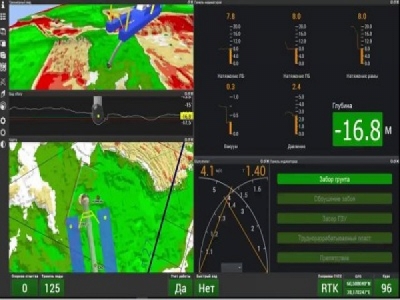
Posted on March 1, 2018
By Dag Pike, MJ
With autonomous vessels being planned for many aspects of the marine sector there is now news that a Russian company is planning to develop an autonomous dredger.
Mikhail Chemodanov who is the technical director of Nonius Engineering Ltd announced the plans for this development at the Hydraulic Engineering Structures and Dredging Congress which was held in Moscow recently.
“A pumping dredger will be the first to be automated”, said Mr Chemodanov. “Russia’s know-how in this sphere is sufficient to be put THIS into practice. Among the advantages of the robotized dredger he mentioned the reduction of operational costs related to personnel, and among the disadvantages there was the need for investment and a risk of program errors.”
Many dredging operations are already automated in modern dredgers where they can follow pre-programmed routes during the dredging operation but to remove the crew entirely is a major step forward with a consequent saving in costs both for the lack of crew and for the capital cost of the dredger where accommodation and facilities will not be required.
Taking the project a stage further Mr.Chemodanov emphasised that that this automated technology could be applied to integrate unmanned dredgers into an intelligent network, ‘an ecosystem’. According to Mr Chemodanov, automated modules can be manufactured separately from vessels to ensure their operational flexibility. Nonius Engineering is a major dredging construction company in Russia.
Another speaker at the conference, Gennady Yegorov, who is the director General of the Marine Engineering Bureau in Russia, commented that the Russian market is currently in need of 64 river dredgers, 26 cranes and boats for bottom-cleaning and 27 hopper barges. According to Yegorv, it is economically efficient to build non-self propelled suction dredgers with no living accommodation for the crew.
“They should be fitted with state-of-the-art equipment including cutters for heavy ground and hydraulic devices for light soils. Each new dredger should also have a receiving ship, an anchor boat, 2-3 non-self-propelled hopper barges and the same number of non-self-propelled hopper barges with pusher tugs,” He also added that it reasonable to use the procedure of Russian River Register for using the decommissioned ships for the construction of new dredgers.
Russia has thousands of miles of rivers and canals that are used for the transport of both cargoes and passengers and these form an important part of the country’s infrastructure. Taking into consideration the demand of different rivers and dredged materials Russia will require dredgers of about 6 different types.
Source: MaritimeJournal





